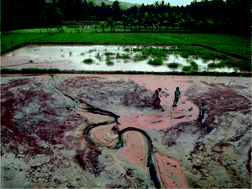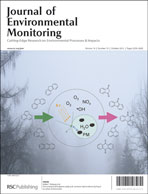Assessment of environmental mercury discharge at a four-year-old artisanal gold mining area on Lombok Island, Indonesia
Abstract
Indonesian artisanal and small-scale gold mining activities (ASGM) have been described for the islands of Borneo (Kalimantan) and Sulawesi. But the increased gold price over recent years has seen operations extend to the islands of Lombok and Sumbawa. For the current research, an environmental assessment was conducted across three new ASGM locations. Gold is recovered by miners through a two-stage process of whole-ore amalgamation and cyanidation. Waste (tailings) is discharged to land or sea with no concern for contaminants in the tailings. The gold grade of ore is up to 5000 mg kg−1. The mean gold grade of the amalgamation tailings is 7 mg kg−1, dropping to 1.2 mg kg−1 for the cyanidation tailings. The mean mercury concentration of the amalgamation tailings is about 3000 mg kg−1 and greater than 1600 mg kg−1 for the cyanidation tailings. Samples of paddy rice grain collected adjacent to cyanidation tailings ponds showed methyl mercury concentrations greater than 100 ng g−1. This is five times above the Chinese permissible level for total mercury in


 Please wait while we load your content...
Please wait while we load your content...